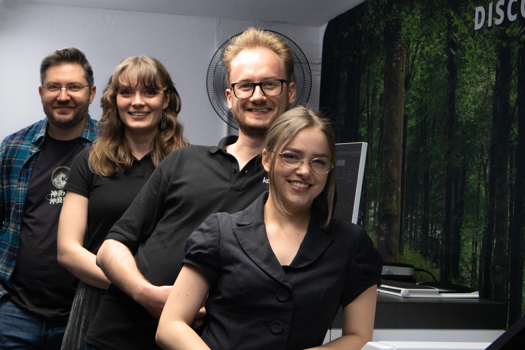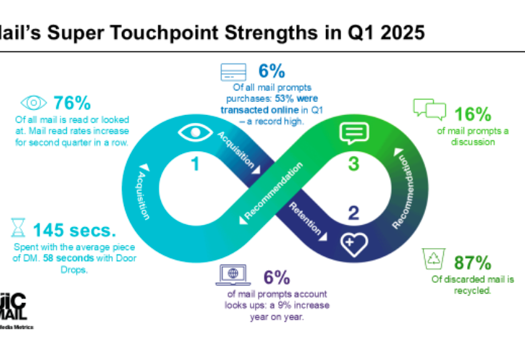On the one hand, a printing business must expand its reach and offering, enabling brands to view it as a go-to vendor that can do it all. On the other hand, as each solution typically requires dedicated technology, space, and know-how – doing so becomes an expensive trait to acquire, one that may not pay off immediately.
This is a serious barrier to entry that keeps many businesses out of exciting markets and opportunities.
Luckily, advanced digital solutions are transforming the landscape, shattering the myth that covering multiple capabilities is a nearly impossible quality to achieve. Here’s how new technology brings innovative ways that enhance efficiency, scalability, and speed-to-market.
Production problems: Current challenges to tackle
1. Traditional constraints Traditional printing methods like screen printing force us to make painful choices. They require lengthy production times that must be processed long in advance and struggle when it comes to flexibility.
Short runs that require a wide colour range are a good example, and this is precisely where industrial digital systems shine. Solutions like the Kornit Apollo platform seamlessly complement screen printing, handling shorter runs with higher colour complexity. By dividing jobs and channelling longer, simpler jobs to screen printing, businesses can maximise productivity and profitability.
2. Profitability under pressure Shrinking margins are a key challenge in screen printing, as the initial business investment makes success much harder to achieve. Rising staff training costs, increased minimum wages, costly business locations, and everything in between are issues no business can or should overlook. Digital tools that require less (or zero) training and feature automated workflows offer a lifeline, streamlining operations to cut costs and enable a more profitable production.
3. The race to market In a world where the new trend goes viral in a matter of seconds, printing businesses must be ready to launch new solutions immediately. But we all know traditional production processes can’t always keep up with market demands, creating setbacks that often force businesses to miss huge opportunities. Accelerating timelines is crucial for staying competitive, an area in which digital solutions are far more helpful.
Speed printing, like the Apollo’s milestone of producing up to 400 impressions per hour or the Atlas MAX POLY’s groundbreaking productivity in polyester sportswear printing, combined with on-demand production that does not require preparing stock in advance, are true game-changers.
Digital tools for transformation
In addition to the above-mentioned advantages, here are more ways digital printing solutions help businesses overcome hurdles:
1 Flexibility without compromise Digital systems enable businesses to scale up or down production seamlessly, crafting complex designs using a wide colour gamut with exceptional options such as neon shades and 3D decorative applications. The ability to print any creative vision on multiple fabrics without having to switch between systems or train staff members turns a single small business into a massive production powerhouse.
2 Making sense of margins By eliminating stock, reducing production floor space, and offering zero-training solutions, printing technology optimises resource allocation and boosts profit. With digital screen printing hybrids, businesses can handle higher complexity at lower costs, significantly improving their bottom line.
3 Accelerating market entry Digital innovations drastically reduce the time between design and production, a new level of agility that ensures faster market entry while enhancing customer satisfaction with on-demand and high-quality results. As new trends emerge, businesses can be the first to turn visions into products and deliver them without skipping a beat.

Make it work: Strategies for digital integration
Implementing the right technologies is a solid starting point, but businesses also need the right mindset to succeed.
1 Don’t reinvent the wheel Disruptive solutions can be intimidating when businesses mistakenly believe they must forget everything they know. Introducing digital tools doesn’t have to disrupt existing workflows. Businesses can create a productive and flexible hybrid model by running digital systems alongside traditional methods and dividing the work based on specific production needs.
2 Upskilling the workforce Businesses should get teams excited about the opportunity to master new technologies and tools. One of the leading benefits of digital systems is their accessibility, as they don’t require heavily trained operators, reducing training time and costs. Investing in targeted training programs can make the transition successful and empower teams to put the new technologies to excellent use.
3 Measuring success To track the effectiveness of digital transformation, businesses should define clear metrics such as production speed, cost savings, and customer satisfaction. Regular reviews ensure continuous improvement and ROI.
Proof in action: Real-world success stories
Print palace Textildruck: From tradition to transformation
Print Palace Textildruck, a German leader in music and event merchandise, has taken a significant leap into digital production to address evolving market demands. For over 30 years, the company has been a trusted provider of high-quality apparel for bands, promotional campaigns, and branded fashion. However, the increasing volume of medium-run production orders – particularly jobs under 500 pieces – posed challenges to their traditional screen-printing processes.
To overcome these bottlenecks, Print Palace adopted Kornit’s Apollo production line and implemented the All-Inclusive Click (AIC) model. This combination enables the company to blend digital and traditional methods, handling complex, custom designs while maintaining efficiency for longer screen-printing runs. The shift has not only streamlined production operations but also enhanced flexibility and profitability.
T-Shirt & Sons: Scaling to new heights in digital production
T-Shirt & Sons (TSS), a prominent European apparel manufacturer serving e-commerce platforms, high-street retailers, and promotional businesses, is further expanding its digital capabilities with the Kornit Apollo production platform. With locations in the UK and the Netherlands, TSS has been a leader in print-on-demand services, helping brands adapt to the increasing demand for quick turnaround times and customisable products.
By integrating Kornit Apollo into its operations alongside existing MAX systems, TSS has significantly increased its production capacity, enabling millions of additional impressions annually. This enhancement streamlines workflows, improves time-to-market, and supports the company’s commitment to maintaining the highest standards of quality.
Ready to transform?
The journey to digital integration begins with a single step. Whether you’re considering small-scale trials or a full-scale transformation, the possibilities are as endless as the designs you’ll be able to print. Take the first steps and explore available solutions, connect with industry experts, and take the leap toward a more flexible, profitable, and sustainable production process.











